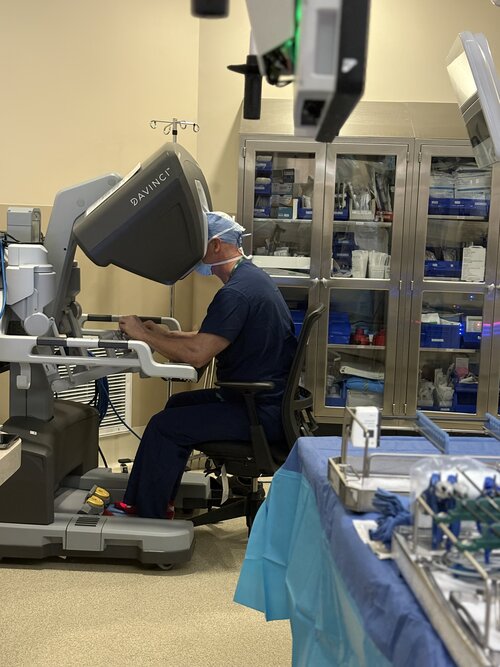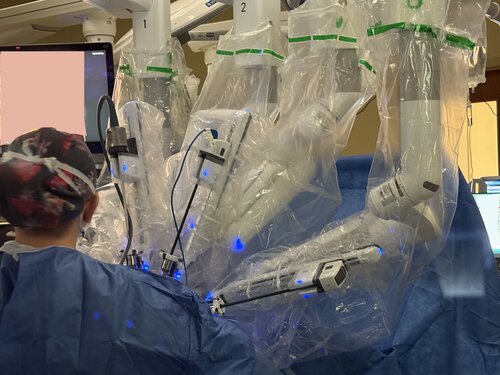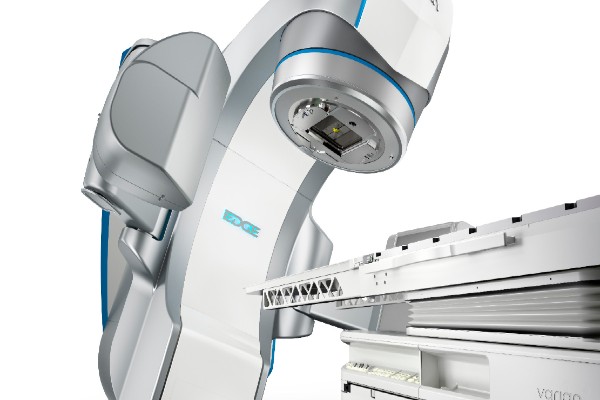Overview
Lung surgery includes a range of procedures used to treat diseases or conditions affecting the lungs and pleura (lining around the lungs).
What is Lung Resection?
A lung resection is a lung operation where thoracic surgeons remove part or all of the lung.
Lungs consist of parts, known as lobes. The right lung has three lobes, and the left lung has two lobes (as the heart takes up space on the left side of the chest).
Why Is Lung Resection Done?
Lung resection procedures are most commonly done as part of a lung cancer treatment plan. They can also help manage other conditions such as infections, emphysema, or trauma.
Doctors may recommend lung resection surgery to:
- Remove cancerous tumors or suspicious nodules;
- Treat lung infections like abscesses;
- Manage chronic obstructive pulmonary disease (COPD) or emphysema;
- Drain infections or remove fluid buildup; or
- Improve breathing function in select conditions.
By removing damaged or diseased lung tissue, surgery can improve a patient’s quality of life or even be lifesaving.
Types of Lung Resection
There are several types of lung resection surgery, each designed for different medical conditions and goals. The types of resections usually note the component or components of the lung that are being removed.
Decortication
This procedure involves the removal of thickened, scarred, or infected pleural tissue to improve lung function. This is most commonly used in cases of empyema or advanced infections.
Lobectomy
The most common type of lung cancer surgery. It involves removing one of the five lobes of the lungs. This is often the standard treatment for early-stage lung cancer.A bilobectomy is when two lobes of the right lung are removed.
Lung Transplant
When a person has end-stage lung disease, lung transplant may be an option when other treatments have failed. A transplant occurs when one or both lungs are removed and a new lung sewed in its place.Riverside does not offer a lung transplant program, but through the affiliation with UVA Health, patients can obtain seamless care between Riverside and their time in Charlottesville for transplant surgery.
Lung Volume Reduction Surgery (LVRS)
Most commonly used in patients with severe emphysema, this surgery removes damaged, non-functioning parts of the lungs to allow the healthier sections to expand and function more efficiently.
Pneumonectomy
An entire side of the lung is removed, usually when cancer is widespread and can't be removed with a smaller surgery. This aims to remove the impacted areas while preserving as much healthy lung as possible.Sleeve Resection
A sleeve resection occurs when a tumor is located near one of the main airways, known as a bronchus (airway). In this procedure the impacted area of the airway is removed, and the ends are reattached. It can be a lung-saving option when cancer is located near airways.
Wedge Resection and Segmentectomy
During a wedge resection a small, triangle-shaped piece of lung tissue is removed. This is often used for small tumors that haven’t spread.A segmentectomy is the removal of an anatomical segment (larger than a wedge, but smaller than a lobe) where its blood supply and accompanying bronchus are removed.
Surgical Approaches and Technology
In addition to the description of the procedure, lung surgeries are also frequently referred to by the type of surgical approach, the surgical technique or the advanced surgical technologies involved. Some of the most common terms used include:
Robotic Assisted Minimally Invasive Surgery
Robotic systems offer surgeons enhanced precision and visualization. Robotic-assisted thoracic surgery using the da Vinci Surgical System is a state-of-the-art, minimally invasive approach to treating lung conditions, including lung cancer.
With the da Vinci robot, thoracic surgeons operate through a few small incisions using highly precise robotic arms and a 3D high-definition camera. This technology provides greater dexterity, enhanced visualization, and improved control compared to traditional methods.
Patients typically experience less pain, reduced blood loss, shorter hospital stays, and faster recovery. Robotic-assisted surgery is commonly used for procedures such as lobectomy, segmentectomy, and mediastinal mass removal, offering a safe and effective option for both cancerous and noncancerous thoracic conditions.



Same Anesthesia Bronchoscopy and Resection (SABR)
SABR is an advanced technique that combines diagnosis and treatment in a single procedure. First, a bronchoscopy is performed by pulmonology under anesthesia to examine the airways and assess any suspicious lung nodules. If biopsies of the nodules confirm cancer, the patient is taken directly to the operating room where the thoracic surgeons performs a lung resection—such as a wedge resection or lobectomy—without needing a second operation or anesthesia.This streamlined approach reduces the number of procedures, shortens hospital stays, and speeds up recovery. By the time the patient wakes up to learn they had cancer, it is already removed. SABR is especially beneficial for early-stage lung cancer patients, as it allows for faster diagnosis and treatment. The size and location of any suspicious nodules will determine if a patient is eligible for a SABR procedure.
Thoracoscopy (VATS) and Thoracotomy
These terms refer to how the chest is accessed during surgery.Thoracotomy is an open-chest surgery.
Thoracoscopy is minimally invasive surgery through a small incision. The minimally invasive approach utilizes video to see inside the chest cavity through a small incision, known as video-assisted thoracoscopic surgery (VATS).
This minimally invasive technique uses a tiny camera and small incisions. Patients typically have less pain and faster recovery than with open surgery. Your thoracic surgeon will determine the most appropriate approach based on the type of surgery, patient anatomy and any other medical conditions the patient may have.
What to Expect
During the Procedure
Lung surgery is performed under general anesthesia. Depending on the type, the operation can last a few hours. You may have a breathing tube, chest drain, and stay in the hospital for a few days.
Minimally invasive approaches like VATS and robotic surgery often result in:
- Less blood loss;
- Smaller incisions and scars;
- Shorter hospital stays; and
- Quicker return to normal activity.
Open surgeries like thoracotomy may require longer recovery times.
Your thoracic surgery team will let you know ahead of time what to expect for your specific procedure.
Following the Procedure
Recovery from lung resection varies by procedure type, but most patients can expect to stay in the hospital for several days, especially after a lobectomy or pneumonectomy.
Pain management, breathing exercises, and early mobility are key parts of recovery.
Pulmonary rehabilitation is often recommended to help patients regain strength and improve lung function. This outpatient program includes supervised exercise, breathing techniques, and education on managing symptoms. Pulmonary rehab plays a vital role in speeding recovery, reducing complications, and enhancing overall quality of life after lung surgery.
Risks of Lung Surgery
All surgeries carry some risk. Common risks of lung resection include:
- Infection
- Bleeding
- Air leaks from the lung
- Pneumonia
- Blood clots
- Breathing problems
Your surgical team will evaluate your overall health and lung function beforehand to minimize complications.




